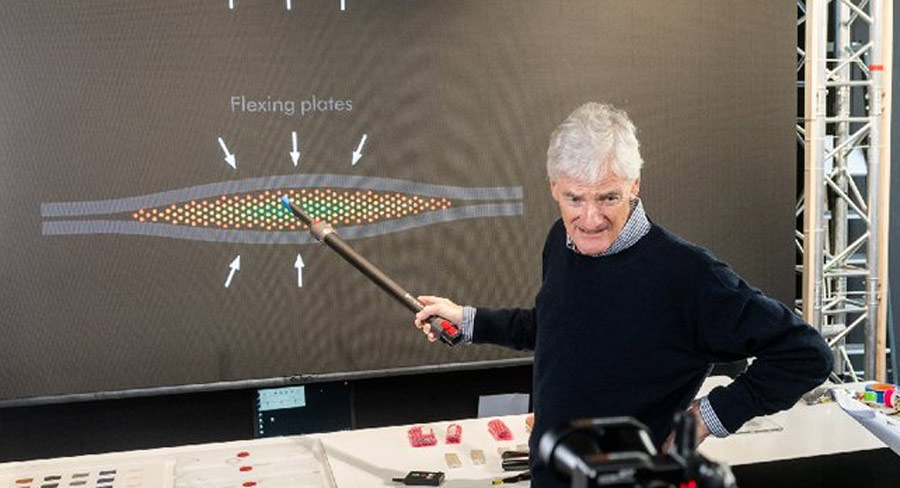It was back in September 2017 that vacuum cleaner giant Dyson announced it would build a range of electric vehicles.
However, in October last year, Sir James Dyson decided to cancel the ambitious project. In a recent interview with The Sunday Times in the UK, the billionaire showcased the first EV the company had developed, codenamed the ‘N526.’ Patents of this vehicle emerged quite some time ago and the prototype featured a slightly sportier and more low-slung design – it certainly had the potential to become a serious rival to the Tesla Model X.
Dyson designed the N526 as a seven-seater that was roughly 5 meters long (16.4 feet), two meters wide (6.5 feet), and 1.7 meters high (5.5 feet).
Read More: Dyson Cans Electric Car Project, Says It’s Not Commercially Viable
The prototype also had a windscreen that rakes back more steeply than on a Ferrari as well as wheels “bigger than on any production car on the market,” Dyson said. It’s not just the exterior design of the stillborn Dyson EV that’s eye-catching.
Sir James Dyson, Britain’s richest man, spent £500m developing an electric car to rival Tesla’s. Then he scrapped it before the first prototype took to the road. He tells John Arlidge why https://t.co/mIVmVFnN6D
— Times Culture (@timesculture) May 17, 2020
Inside, the N526 has slim seats with segmented cushions and round headrests. According to the company’s founder, the seat backs were designed to offer great lumbar support. There was also no traditional gauge cluster: instead, the Dyson EV would feature an innovative head-up display that “floats in front of your face like a hologram.”
Sir James Dyson, who is worth just shy of $20 billion, says he spent roughly $604 million of his own money on the project before calling it quits. He says each car would have had to sell for $181,000 for the company to break even. The 500-strong team created for the electric vehicle project is now working on other things for the company. Not everything may be lost, however, as Dyson added his company is open to the idea of letting car manufacturers tap into the company’s solid-state batteries.




